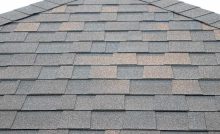The Basics of Gutter Sizing
Every home has a unique set of gutter requirements, which makes gutter sizing an important aspect of gutter design. In this blog, general contractor V. Nanfito Roofing & Siding, Inc. shares an overview on the basics of gutter sizing.

Why Is Proper Gutter Sizing Important?
Your gutters need to have the capacity to route rainwater from the roof, away from the building. This means there has to be enough headroom to allow for unusually high amounts of rainfall without spilling rainwater near the foundations. Choosing undersized gutters can lead to constantly overflowing troughs, even during moderate rainfall. Oversized gutters, on the other hand, will often have standing water in it.
Gutter Profiles
Homeowners can choose between half-round and K-style gutter profiles. Half-round gutters are typically seen on traditional style homes, with a U-shaped profile. K-style gutters, on the other hand, have an angular look. Its front-facing side looks like crown moulding when viewed from the ground, and works with just about any home improvement design.
The name “K-style” is assigned by the Sheet Metal and Air Conditioning Contractors National Association (SMACNA), with the K-style being the 11th (that is, the letter K) in a line of gutter profiles. Contrary to popular belief, K-style gutters do not resemble the letter K at all.
How Gutters Are Sized
There are three factors that are considered when sizing gutters:
- Roofing Square Footage — This is roof surface area, which can be derived from the roofing installation plans but can also be measured manually if unavailable.
- Roof Pitch Factor — The steeper the roof, the more rainwater it can collect. A standard set of multipliers called the roof pitch factor adjusts the roofing surface for a more accurate calculation of rainfall. For example, a roof with a 12/12 slope—that is, 12 inches of rise for every 12 inches of run—has a roof pitch factor of 1.3. The lowest given roof pitch factor, 1.0, applies to roofs with 3/12 slope or lower.
- Maximum Rainfall Intensity — This is the strongest recorded rainfall in the area. The data is provided by the National Weather Service, and is measured in inches per hour.
Let’s use these in an example: suppose a contractor is designing a gutter system for a roof with a standard 4/12 pitch, with a corresponding roof pitch factor of 1.05. Let’s say the roofing square footage adds up to 1,000 square feet. Assuming that the local maximum rainfall intensity is 6.5 inches per hour, the resulting adjusted square footage would be 6,825 square feet. The corresponding gutter sizes would be 3X4-inch K-style or 4-inch half-round gutters. The downspouts will then be selected accordingly.
V. Nanfito Roofing & Siding, Inc. is your leading provider of gutter and roof maintenance services. Give us a call at (203) 639-1634 or fill out our contact form to schedule an appointment.
Recent Posts
How to Keep Your Windows Cleaner Longer
Maintaining clean and sparkling windows is not just about the immediate aesthetic appeal; it can…
Most Common Culprits Behind Gutter Clogs
For homeowners in Meriden, CT, maintaining the functionality of gutters is crucial to protecting the…
Is Winter-Related Roofing Damage Covered by Homeowners Insurance?
As the chill of winter embraces Meriden, CT, homeowners begin to wonder about the resilience…
Most Damaging Debris for Roofs
When it comes to maintaining the integrity of your home in Meriden, CT, the condition…
Can a Window Replacement Make You Happier?
Window replacement is more than just a home improvement project. It's an opportunity to enhance…
How to Prevent Premature Gutter Failure
Gutters play an essential role in directing rainwater away from your home. They can fail…






